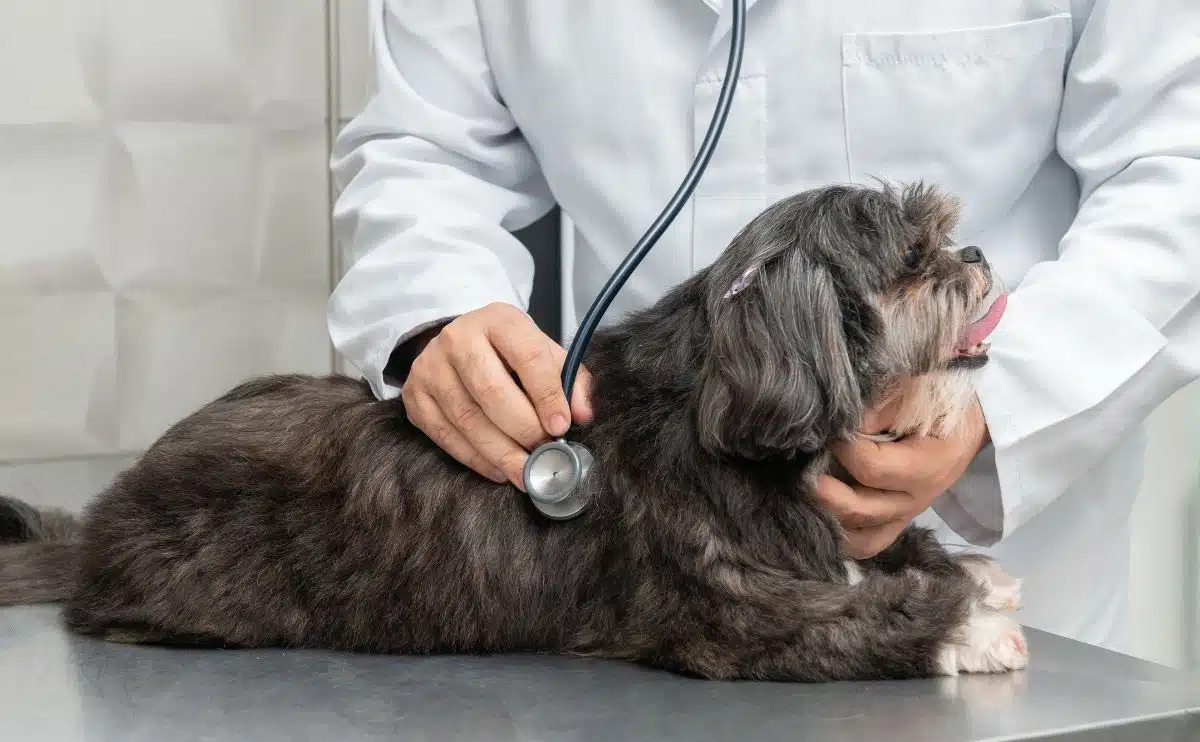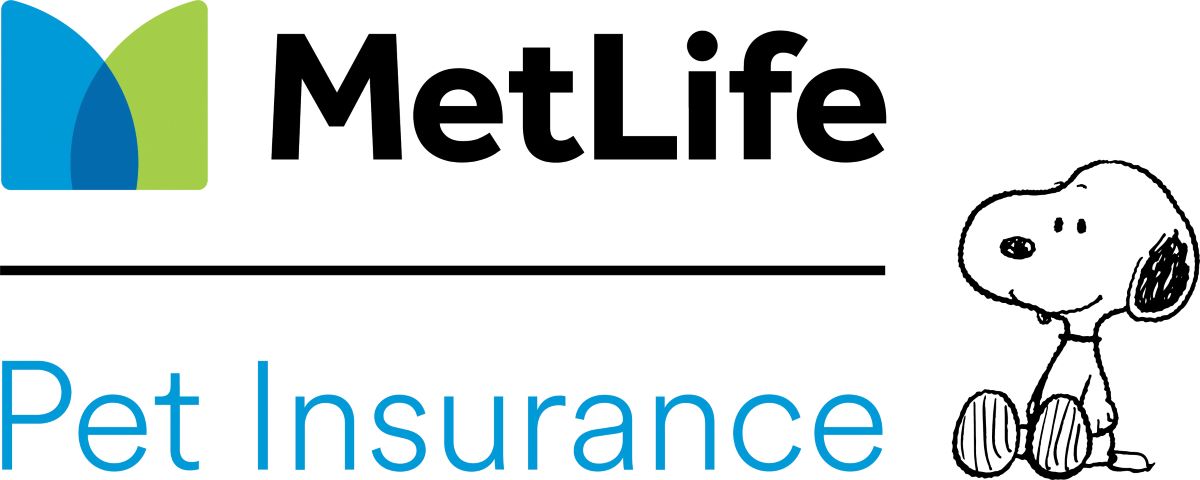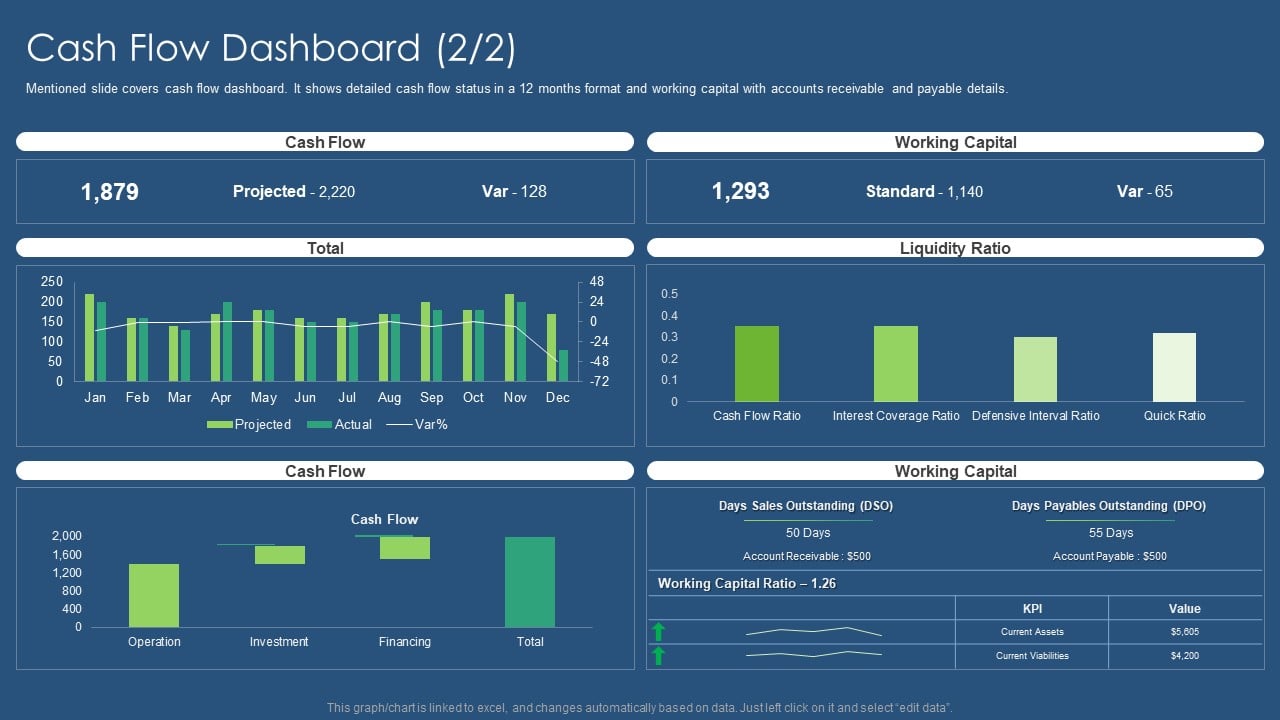Home>Finance>How Does The Deductible Work For Pet Insurance?


Finance
How Does The Deductible Work For Pet Insurance?
Modified: December 30, 2023
Learn how deductibles work for pet insurance and manage your finances more effectively with expert advice and tips.
(Many of the links in this article redirect to a specific reviewed product. Your purchase of these products through affiliate links helps to generate commission for LiveWell, at no extra cost. Learn more)
Table of Contents
- Introduction
- What is a Deductible?
- Understanding Pet Insurance
- How Does a Deductible Work for Pet Insurance?
- Types of Deductibles in Pet Insurance
- Factors to Consider when Choosing a Deductible
- Pros and Cons of Different Deductible Levels
- Case Studies: Examples of how Deductibles Work
- Frequently Asked Questions about Pet Insurance Deductibles
- Conclusion
Introduction
Pet insurance has become increasingly popular as pet owners strive to provide their furry friends with the best possible healthcare. Just like human health insurance, pet insurance helps cover the costs of medical treatments and procedures for our beloved pets. However, when comparing different pet insurance policies, it’s important to understand the role of a deductible.
A deductible is an amount that the pet owner is required to pay out of pocket before the insurance coverage kicks in. It serves as a form of cost-sharing between the pet owner and the insurance provider. Understanding how deductibles work in pet insurance can help pet owners choose the right policy and effectively manage their finances.
In this article, we will delve into the concept of deductibles in pet insurance, how they work, and the various types of deductibles available. We will also explore the factors to consider when choosing a deductible and provide examples of how deductibles can affect your out-of-pocket expenses when filing a pet insurance claim.
By gaining a deeper understanding of deductibles in pet insurance, you’ll be better equipped to make informed decisions about your pet’s healthcare and financial well-being.
What is a Deductible?
A deductible is a specified amount of money that the policyholder must pay before the insurance company begins to cover the costs of a claim. It acts as a form of self-insurance, where the policyholder takes on a portion of the financial responsibility before the insurance coverage kicks in.
In the context of pet insurance, a deductible is the out-of-pocket expense that pet owners must pay for their pet’s medical treatments before the insurance company reimburses them for the covered expenses. It is a way for insurance companies to share the cost burden with the policyholders and prevent them from filing small, frivolous claims.
The purpose of a deductible is twofold. First, it helps prevent overutilization of insurance coverage for minor or routine expenses. By requiring the policyholder to pay a certain amount upfront, it discourages unnecessary claims and helps keep insurance premiums more affordable for all pet owners.
Second, deductibles contribute to cost control. Higher deductibles typically result in lower insurance premiums, giving pet owners the option to choose a deductible level that aligns with their financial capabilities. However, it’s essential to strike a balance, as setting the deductible too high could result in substantial out-of-pocket expenses in the event of a significant medical issue.
It’s important to note that the deductible is typically based on an annual timeframe. This means that once the deductible is met for the year, subsequent claims within that same year will be covered by the insurance company according to the policy’s terms and conditions.
Understanding the role of a deductible is crucial when purchasing pet insurance. It allows pet owners to have an accurate picture of their financial responsibilities and make informed decisions regarding their pets’ healthcare.
Understanding Pet Insurance
Pet insurance is a type of insurance coverage designed to help pet owners manage the costs of veterinary care for their furry companions. Just like health insurance for humans, pet insurance provides financial protection in the event of unexpected accidents, illnesses, or injuries.
When it comes to pet insurance, there are different types of coverage options available, ranging from accident-only policies to comprehensive plans that cover accidents, illnesses, and routine care. The specific coverage details and limits can vary between different insurance providers, so it’s essential to review the policy carefully to understand what is covered and what is not.
When you enroll your pet in an insurance policy, you pay a monthly or annual premium to the insurance provider. In return, the insurance company will reimburse you for eligible veterinary expenses, up to the limits outlined in the policy. These expenses may include diagnostic tests, surgeries, medications, hospital stays, and even alternative therapies like acupuncture or chiropractic care, depending on the policy you choose.
It’s worth noting that pet insurance operates on a reimbursement basis. This means that you will initially pay the veterinarian directly for the services rendered, and then submit a claim to your insurance company for reimbursement. The amount you receive will depend on your policy’s coverage, deductibles, and any applicable co-pays or co-insurance.
One significant advantage of pet insurance is the flexibility it provides in choosing your preferred veterinarian. Unlike some human health insurance plans, pet insurance policies generally don’t require you to use specific providers or network veterinarians. This allows you to continue visiting your trusted veterinarian who knows your pet’s medical history and provides the best care.
Before purchasing a pet insurance policy, it’s essential to thoroughly research and compare different providers. Consider factors such as coverage options, exclusions, waiting periods, deductibles, premium costs, and customer reviews. Some policies may also offer additional benefits like coverage for prescription medications, behavioral therapy, or even travel insurance for pets.
By understanding the ins and outs of pet insurance and the specific terms of your policy, you can make informed decisions about your pet’s healthcare and ensure financial protection during unexpected emergencies or illnesses.
How Does a Deductible Work for Pet Insurance?
Understanding how deductibles work in pet insurance is essential for pet owners looking to make the most out of their coverage. When you file a claim for your pet’s medical expenses, the deductible is the amount you must pay out of pocket before the insurance company starts reimbursing the eligible expenses.
Here’s an example to illustrate how a deductible works:
Let’s say you have a pet insurance policy with a $500 deductible. If your pet requires medical treatment that costs $1,200, you will have to pay the first $500 out of pocket. Once you have reached the deductible limit, the insurance company will start reimbursing the remaining $700, according to the policy’s coverage and reimbursement percentages.
It’s important to note that deductibles are typically applied on an annual basis. This means that once you have met your annual deductible, any additional claims you make during that policy year will be subject to the policy’s reimbursement terms and conditions without needing to meet the deductible again.
It’s also worth mentioning that deductibles can vary between insurance policies. Some insurers offer a per-incident deductible, meaning that the deductible applies to each new illness or injury. Others may provide an annual deductible, where you only need to meet the deductible once per policy year, regardless of the number of claims you file.
Choosing the right deductible level for your pet insurance policy requires careful consideration. If you opt for a higher deductible, your monthly premium may be lower, but you will be responsible for a larger out-of-pocket expense before the insurance coverage comes into play. On the other hand, a lower deductible will result in higher monthly premiums but reduce your initial cost in the event of a claim.
It’s crucial to strike a balance between the deductible and your financial capabilities. Consider factors such as your pet’s age, breed, and potential medical needs when deciding on the appropriate deductible level. Additionally, think about your comfort level with handling unexpected expenses and how much risk you are willing to take on.
Remember that pet insurance is designed to protect you from the uncertainties of veterinary expenses. By understanding how deductibles work and choosing the right deductible level, you can ensure that you have adequate coverage for your pet’s healthcare needs while managing your budget effectively.
Types of Deductibles in Pet Insurance
When it comes to pet insurance, there are different types of deductibles that insurance companies offer. Each type has its own unique characteristics and can impact the overall cost and coverage of your policy.
1. Annual Deductible: This is the most common type of deductible in pet insurance. With an annual deductible, you only need to meet the deductible once per policy year, regardless of the number of claims you file. Once you reach the deductible amount, subsequent claims made during that policy year will be subject to the policy’s reimbursement terms without needing to meet the deductible again.
2. Per-Incident Deductible: Some insurance providers offer a per-incident deductible. With this type of deductible, you are required to meet the deductible for each new illness or injury that your pet experiences. For example, if your pet has two separate medical conditions within the policy year, you would need to meet the deductible for each condition before the insurance coverage begins for that specific condition.
3. Lifetime Deductible: A lifetime deductible stays with your pet throughout their life and is not reset annually. This means that once you meet the lifetime deductible, any eligible expenses for your pet’s lifetime will be subject to the policy’s coverage and reimbursement terms, without needing to meet the deductible again. Lifetime deductibles are less common but may provide long-term cost savings for pets with chronic or recurring conditions.
When choosing a pet insurance policy, it’s important to understand the type of deductible being offered and consider how it aligns with your financial situation and your pet’s healthcare needs. Each type of deductible has its own advantages and considerations.
Some pet owners may prefer an annual deductible for its convenience and simplicity. Others may opt for a per-incident deductible if their pet is less likely to have multiple claims in a single policy year. For those with pets prone to chronic conditions, a lifetime deductible may provide more cost savings in the long run.
In addition to the type of deductible, it’s also essential to consider the specific deductible amount. Insurance companies typically offer a range of deductible options, allowing you to choose the level that best suits your budget and risk tolerance. Keep in mind that a lower deductible will result in higher monthly premiums, while a higher deductible can reduce monthly costs but increase your initial out-of-pocket expenses when filing a claim.
By understanding the different types of deductibles in pet insurance and considering your pet’s unique situation, you can select the deductible type and amount that best fits your needs and provides the right balance between cost and coverage.
Factors to Consider when Choosing a Deductible
Choosing the right deductible for your pet insurance policy requires careful consideration. The deductible amount can have a significant impact on your out-of-pocket expenses and the overall cost of your policy. Here are some factors to consider when selecting a deductible:
1. Financial Capability: Consider your financial situation and ability to pay for veterinary expenses out of pocket. A higher deductible may result in lower monthly premiums, but it also means you’ll need to cover a larger portion of the costs before the insurance kicks in. Opting for a lower deductible might provide more predictable costs, but it will likely come with higher monthly premiums.
2. Risk Tolerance: Assess your comfort level with taking on risk. A higher deductible means more risk for you in case of a costly veterinary procedure. On the other hand, a lower deductible provides more coverage and reduces your initial out-of-pocket costs but may come with higher premiums. Consider how much risk you are willing to assume and how much financial security you want when it comes to your pet’s healthcare needs.
3. Pet’s Age and Health: Take into account your pet’s age and overall health. Younger pets are generally healthier and may have fewer medical issues, so a higher deductible could be a more suitable choice. Older pets or those with pre-existing conditions may require more frequent veterinary care, in which case a lower deductible could be beneficial to manage the costs.
4. Breed and Genetic Predispositions: Certain breeds are more prone to specific health conditions. If your pet belongs to a breed with known health issues, it may be wise to choose a lower deductible to ensure adequate coverage for potential medical expenses related to these conditions.
5. Cost of Veterinary Care: Research the average costs of veterinary care in your area. Consider the potential expenses for routine exams, vaccinations, and potential unexpected emergencies. This will help you evaluate how much coverage you may need and select a deductible that aligns with your projected veterinary costs.
6. Policy Coverage and Reimbursement: Review the coverage and reimbursement percentages offered by different insurance providers. Some policies may have a higher reimbursement rate after the deductible is met, making a higher deductible more manageable. Compare the deductible amounts with the overall coverage and reimbursement terms to determine the best fit for your needs.
7. Long-Term Considerations: Consider the long-term cost implications when selecting a deductible. While a higher deductible may save you money on monthly premiums, it could result in higher out-of-pocket expenses if your pet requires frequent veterinary care. Similarly, a lower deductible may offer more comprehensive coverage, but it may be costlier in the long run if your pet rarely needs medical attention.
By taking these factors into account, you can make an informed decision that balances your financial situation, risk tolerance, and your pet’s healthcare needs. Remember, choosing the right deductible can help you manage costs effectively and provide your pet with the necessary medical care while offering peace of mind.
Pros and Cons of Different Deductible Levels
When choosing a deductible for your pet insurance policy, it’s important to consider the advantages and disadvantages of different deductible levels. Each level comes with its own set of pros and cons that can impact your out-of-pocket expenses and overall coverage. Here’s a breakdown:
Low Deductible (Pros):
- Greater Coverage: A low deductible means insurance coverage starts sooner, reducing your initial out-of-pocket expenses when filing a claim.
- Predictable Costs: With a lower deductible, you can have a more predictable cost structure. You’ll know that insurance coverage will kick in earlier, helping to manage potential high veterinary bills.
- Less Financial Stress: A low deductible can provide peace of mind, especially for pet owners who want to ensure they can afford necessary medical treatment for their pets without delay.
Low Deductible (Cons):
- Higher Premiums: Lower deductibles typically come with higher monthly premiums. You’ll need to weigh the cost of the premiums against the benefits of the lower deductible.
- Less Savings: With a low deductible, you may have less opportunity to save on premium costs since the insurance coverage begins earlier and the insurance company pays a higher portion of the medical expenses.
- Limited Future Cost Control: A low deductible locks you into higher monthly premiums, which can limit your ability to adjust your policy to changing financial circumstances.
High Deductible (Pros):
- Lower Premiums: Opting for a high deductible can significantly reduce your monthly premium payments, allowing you to allocate those savings elsewhere.
- Cost Control: With a high deductible, you’re more likely to have comprehensive coverage for major medical expenses while retaining control over routine and minor expenses, which may not be covered or needed for insurance claim submission.
- Flexibility: Higher deductibles offer flexibility in adjusting your coverage as your financial situation evolves. You can increase the deductible if you want to lower your premium or decrease the deductible if you can afford higher monthly payments.
High Deductible (Cons):
- Greater Initial Out-of-Pocket Expenses: A high deductible means you will have to bear a larger portion of the costs before the insurance coverage begins, potentially causing financial strain in case of high-cost claims.
- Risk of Underutilization: Some pet owners with high deductibles may hesitate to seek necessary veterinary care due to the out-of-pocket costs, potentially delaying treatment and jeopardizing their pet’s health.
- Uncertainty with Future Expenses: Higher deductibles may result in larger out-of-pocket expenses if your pet requires frequent medical attention, especially if they have underlying health conditions.
Ultimately, the choice of deductible level depends on your financial situation, risk tolerance, and your pet’s healthcare needs. It’s important to carefully consider both the pros and cons associated with different deductible levels and select the one that provides the right balance between cost and coverage for you and your furry companion.
Case Studies: Examples of how Deductibles Work
Let’s explore a few case studies to understand how deductibles work in a real-life pet insurance scenario:
Case Study 1:
Emily has a pet insurance policy with a $250 annual deductible. Her dog, Bailey, requires surgery for a torn ligament that costs $2,500. Since Emily has not yet met her deductible for the year, she is responsible for the first $250. Once the deductible is met, the insurance company will reimburse Emily for the remaining $2,250, according to the policy’s coverage and reimbursement terms.
Case Study 2:
Michael has a per-incident deductible of $500 for his pet insurance policy. His cat, Whiskers, develops a chronic skin condition that requires ongoing treatment and care. Each time Michael visits the veterinarian for Whiskers’ skin condition, he must meet the $500 deductible. Once the deductible is met for that specific condition, the insurance coverage kicks in, and Michael can claim eligible expenses related to Whiskers’ skin condition.
Case Study 3:
Sarah has a lifetime deductible of $1,000 for her pet insurance policy. Her dog, Max, has a chronic heart condition that requires regular medication and veterinary visits. Once Sarah meets the $1,000 lifetime deductible for Max’s heart condition, any eligible expenses related to his heart condition will be covered by the insurance company according to the policy’s terms and conditions, without needing to meet the deductible again in the future.
These case studies illustrate how deductibles work in different pet insurance scenarios. The deductible acts as a threshold that the policyholder must meet before the insurance coverage starts. Depending on the policy terms, deductibles can be based on a per-incident, annual, or lifetime basis.
It’s important to consider your pet’s specific health needs, the likelihood of frequent veterinary visits, and your financial situation when selecting a deductible. By understanding how deductibles work and how they would apply in various scenarios, you can make an informed decision and choose a deductible that aligns with your needs and provides the right balance between coverage and cost.
Frequently Asked Questions about Pet Insurance Deductibles
Here are answers to some common questions pet owners have about pet insurance deductibles:
1. What is the purpose of having a deductible in pet insurance?
The purpose of a deductible is to share the cost burden between the pet owner and the insurance company. It helps prevent overutilization of insurance coverage for minor expenses and keeps premiums affordable.
2. What is the difference between an annual deductible and a per-incident deductible?
An annual deductible applies once per policy year, regardless of the number of claims. A per-incident deductible applies to each new illness or injury, requiring the deductible to be met separately for each claim.
3. Can I choose the deductible amount for my pet insurance policy?
Insurance companies typically offer a range of deductible options, allowing you to choose the level that best fits your budget and risk tolerance. Consider your financial capabilities and potential veterinary expenses when selecting a deductible.
4. Do I need to meet the deductible for every claim that I file?
No, once you meet the deductible for the annual or per-incident timeframe, any additional claims made during that period will be subject to the policy’s reimbursement terms and conditions without needing to meet the deductible again.
5. Can I change my deductible after purchasing a pet insurance policy?
Some insurance providers may allow you to change your deductible level upon policy renewal. However, it’s important to review the terms and conditions of your specific policy and consult with your insurance provider to understand any limitations or fees associated with changing the deductible.
6. How does the deductible affect my premium?
In general, a higher deductible will result in lower monthly premiums, while a lower deductible will lead to higher premiums. It’s important to find the right balance that suits your financial situation and pet’s healthcare needs.
7. Does the type of deductible affect the coverage I receive?
The type of deductible you choose can impact your coverage. For example, a per-incident deductible may provide more coverage for individual claims, while an annual deductible offers broader coverage within a policy year. Consider your pet’s medical history and potential future needs when considering the deductible type.
8. Is the deductible applicable to all veterinary expenses?
Deductibles typically apply to eligible expenses covered by the insurance policy. Each policy may have its own specific set of coverage and exclusions. Review your policy documents carefully to understand what expenses are subject to the deductible.
9. Does my pet insurance deductible carry over to other pets?
No, the deductible is specific to each insured pet. If you have multiple pets covered under the same policy, each pet will have its own deductible that applies to their individual healthcare expenses.
10. Can I get reimbursed for my deductible?
No, the deductible is the amount that you, as the policyholder, are responsible for paying out of pocket. It serves as a cost-sharing mechanism between you and the insurance company. Reimbursement usually starts after you have met the deductible.
These frequently asked questions about pet insurance deductibles should provide you with a clearer understanding of how deductibles work and the considerations to keep in mind when choosing a pet insurance policy for your furry friend.
Conclusion
Pet insurance deductibles play a crucial role in determining the out-of-pocket expenses and overall cost of coverage for your furry friend’s healthcare. Understanding how deductibles work and considering the factors involved is paramount in making informed decisions about your pet insurance policy.
When selecting a deductible, take into account your financial capability, risk tolerance, your pet’s age and health, and the potential costs of veterinary care. Each deductible level – whether low or high – has its own pros and cons that can impact your budget and coverage options.
A low deductible provides more immediate coverage but often comes with higher premiums. It can be a good choice for those who prefer predictable costs and want to minimize initial out-of-pocket expenses.
On the other hand, a high deductible can offer cost savings with lower monthly premiums. It enables pet owners to retain control over routine and minor expenses while focusing on comprehensive coverage for major medical events.
It’s essential to carefully consider the deductible type and amount that best suits your financial situation, risk tolerance, and your pet’s healthcare needs. Ensure you review and compare different insurance providers, understanding their policy terms, coverage limits, and reimbursement percentages to make an informed decision.
Pet insurance is an investment in your pet’s well-being and can provide financial protection during unexpected medical emergencies. By choosing the right deductible level and understanding how deductibles work, you can help ensure that you’re getting the most value out of your pet insurance coverage while managing your budget effectively.
Remember, every pet is unique, and their healthcare needs may differ. By tailoring your pet insurance policy and deductible to their specific requirements, you can provide them with the best possible care, peace of mind, and financial security.














